23 Houseplants You Can Grow Even If You Don't Get Much Sun
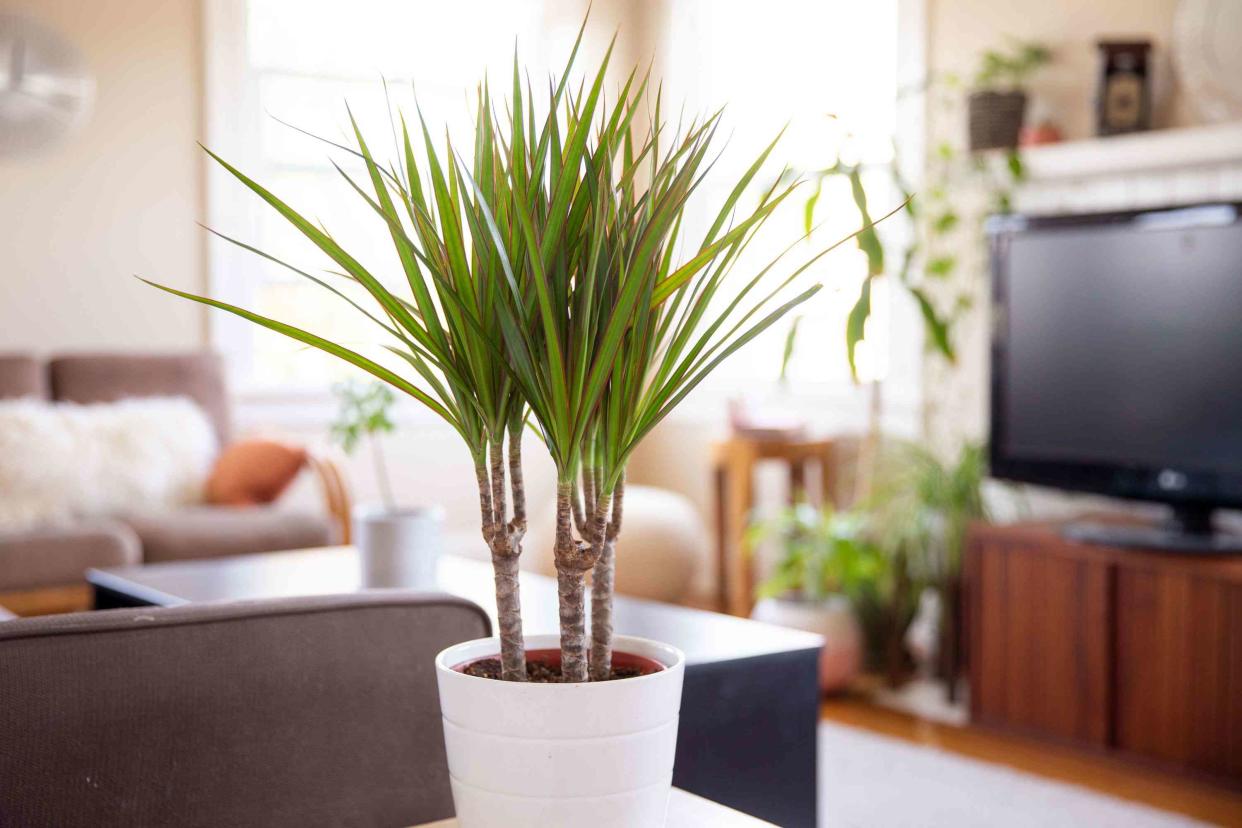
The Spruce / Krystal Slagle
When you're looking to dress up the dark corners of your home, apartment, or office, plants that can grow without much sun are the solution to the dilemma. But if you think you can get a plant that doesn't need sun at all, you'll be disappointed. All plants need light to survive; it's the energy source they use to feed themselves through photosynthesis.
There are, though, a number of amazingly resilient indoor plants for shady spots with minimal amounts of light. Some are sustained with just fluorescent lighting, while others prefer a shady spot or filtered light. No matter what your light situation, a grow light is always beneficial, especially during winter and for areas with little to no natural light.
The 23 types of plants that don't need much light to grow.
Chinese Evergreen
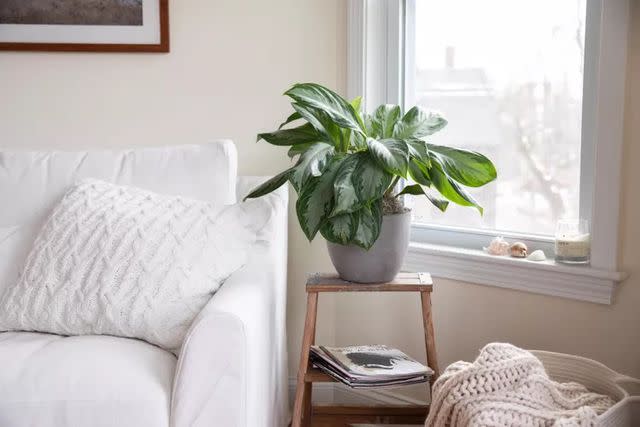
The Spruce / Leticia Almeida
Chinese evergreen (Aglaonema commutatum) is a lush foliage plant with large oval leaves in shades of green and color variations including pinks, white, and silver. Solid-colored leaves tolerate almost full shade while those with variegation like a little more light. Provide high humidity, warm temperatures and consistently moist soil to keep your Chinese evergreen looking good. This plant is toxic to people and pets if eaten.
Scarlet Star Bromeliad
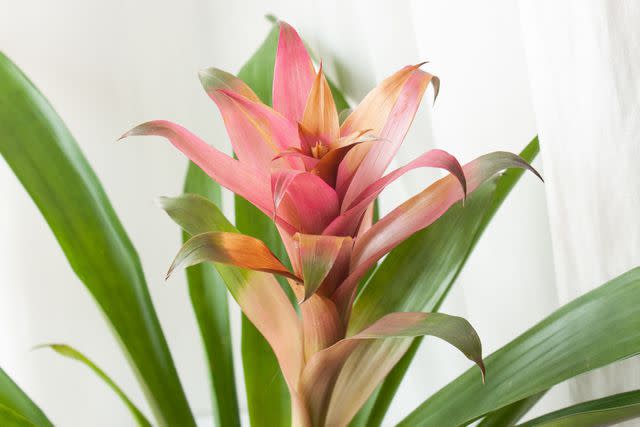
The Spruce / Letícia Almeida
Light requirements of plants in the Bromeliad genus vary but the Scarlet Star (B. guzmania), is a popular, easily obtained variety that grows well without much sun. It's an epiphyte usually grown in pots with a mixture of potting soil and sand or orchid mix. At three to four years, bromeliads will bloom for the only time in their life with a set of unique, colorful bracts (modified leaves) that last two to four months. Add a grow light to encourage bloom.
Cast Iron Plant
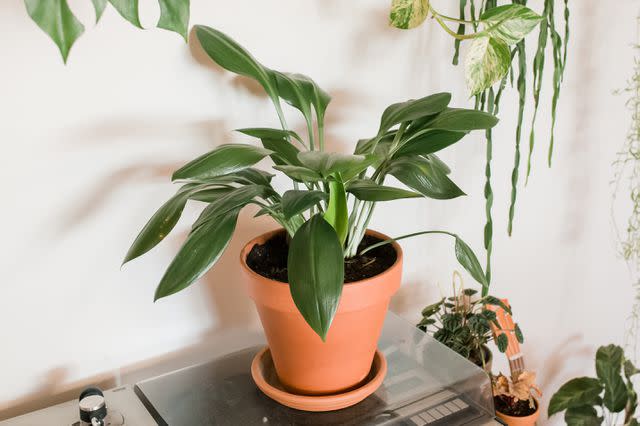
The Spruce / Kara Riley
Large, arching, lance-shaped leaves define the popular cast iron plant (Aspidistra elatior). Variegation, striped, and spotted foliage add interest to different types. It's well suited for shady spots, low maintenance, and tolerates a wide range of light and soil conditions. Be careful to not overwater, allowing the soil to dry out in between.
Dieffenbachia
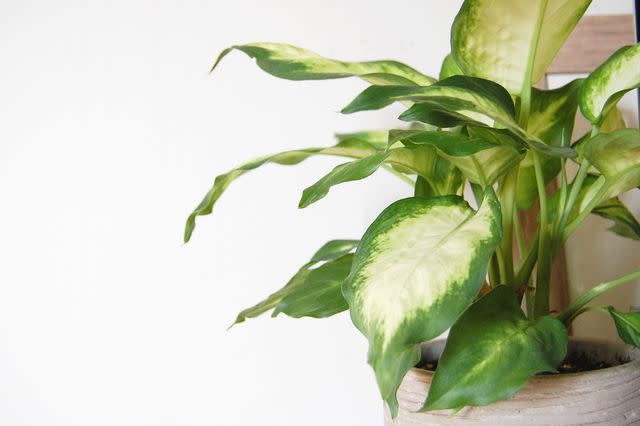
The Spruce / Cori Sears
Most varieties of Dieffenbachia will adapt to grow without much sun. Large, green, oval leaves feature pointed tips with contrasting margins, stripes, and blotches. They can grow fairly tall, up to 3 to 5 feet. Provide extra humidity and don't let your plant dry out. While wintertime shade is well-tolerated, dieffenbachia benefits from a grow light during spring and summer. This plant is toxic to humans and pets.
Prayer Plant
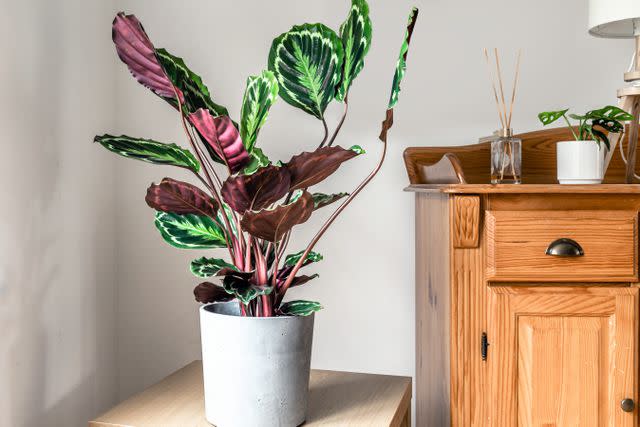
The Spruce / Cara Cormack
Distinguished for its striking foliage, the prayer plant (Maranta leuconeura) is known for its leaves that fold up at night like hands in prayer. This tropical plant won't tolerate bright light, developing brown splotches and washed-out coloring, though a grow light during winter months will keep it looking its best.
Give the prayer plant plenty of moist air and well-draining soil, and never let the soil dry out completely. Use room temperature to slightly warm water when the top layer of soil gets dry.
Heartleaf Philodendron
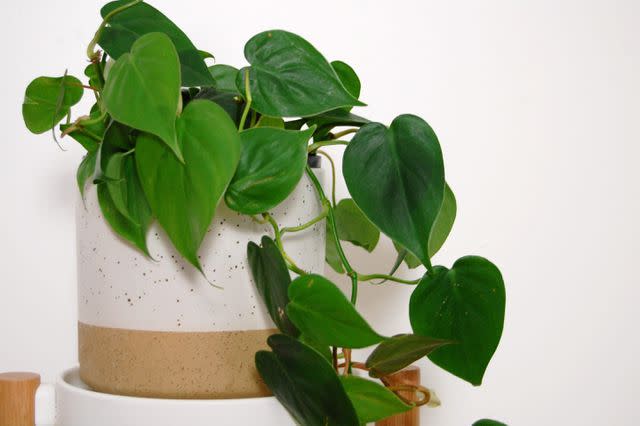
The Spruce / Cori Sears
Notable as one of the easiest tropical houseplants to grow, heartleaf philodendron (Philodendron hederaceum) thrives in dry air and fluorescent light. Diffused light is ok, too, but direct sunlight quickly burns foliage. Dark green leaves taper to a point along vines that can grow to 13 feet. Plant this philodendron in a soilless mix of peat moss and vermiculite. Allow soil to dry out on the surface between waterings.
Philodendrons are toxic for humans and animals to eat.
Spider Plant
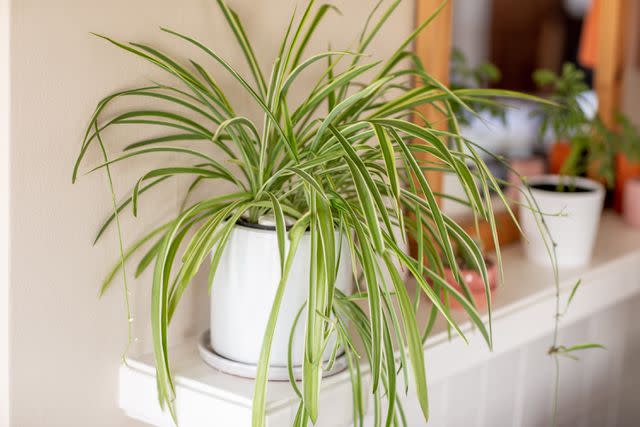
The Spruce / Krystal Slagle
Always popular, the spider plant features long, arching, grass-like green leaves that may have variegation. This fast-grower also puts out numerous plantlets that drape from the mother plant, adding to its graceful appearance. Spider plants (Chlorophytum comosum) are a good choice starting out but can be picky about chemically treated water. Use distilled water or rainwater if brown spots appear. Plantlets can be easily propagated.
Snake Plant
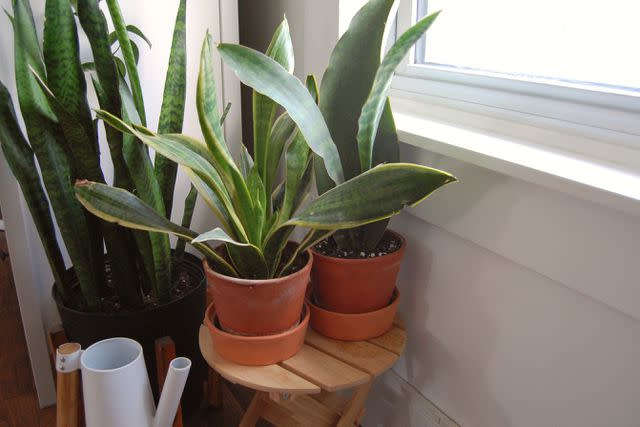
The Spruce / Cori Sears
Extremely easy to care for, snake plant (Dracaena spp.) also gets by on fluorescent lighting which makes it a top choice for office environments. It's one of the plants most likely to survive with little sun. Long, slender, upright leaves distinguish snake plants, often with white or yellow variegation and leaf margins.
Bright sunlight burns the foliage, but plants grow more quickly with some indirect or morning light. Allow soil to dry out completely, then water deeply. Snake plant is toxic to cats and dogs.
ZZ Plant
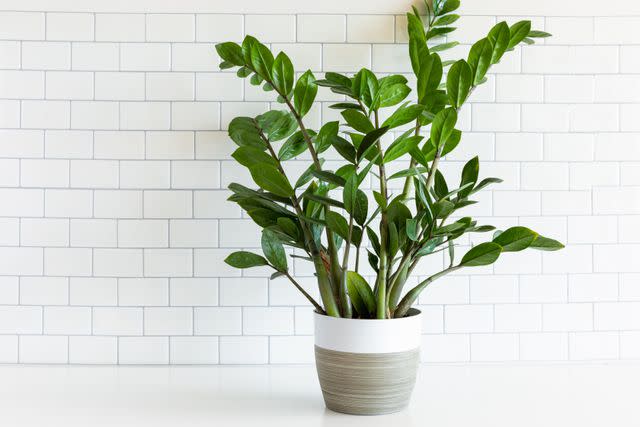
The Spruce / Anastasia Tretiak
Noteworthy for its dark green, waxy leaves, ZZ plant (Zamioculcas zamiifolia) is a good choice when you're just starting with houseplants. It's drought tolerant and adaptable to various soil and light conditions, which makes it extremely low maintenance. Sturdy stems grow upright, from 2 to 4 feet tall. Dust foliage lightly with a soft cloth—don't use leaf shine. This plant is toxic to humans and pets.
Lucky Bamboo
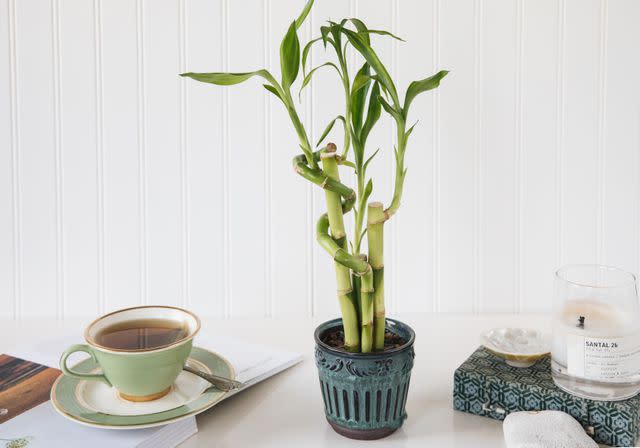
The Spruce / Leticia Almeida
Lucky bamboo (Dracaena sanderiana) is a component of feng shui and Chinese tradition. Its thick green stalks grow in swirls and are sometimes braided with sets of leaves at the top. While stems may resemble true bamboo, this plant actually belongs to the Dracaena genus with growth habits more similar to a succulent. Virtually indestructible, lucky bamboo grows in soil or water but is sensitive to heavy minerals, so use distilled water if you have hard water.
This plant is toxic to people and pets to eat.
Dragon Tree
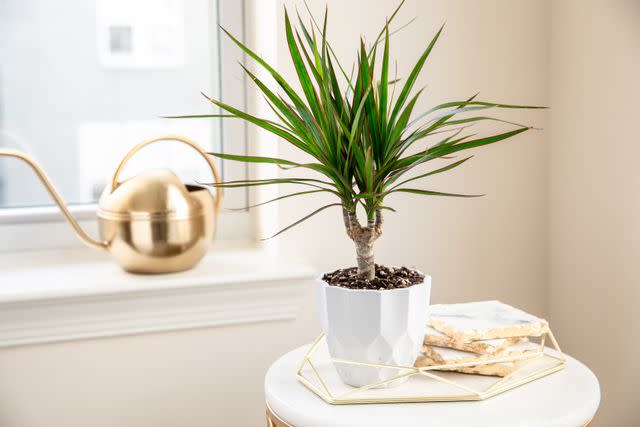
The Spruce / Anastasiia Tretiak
Adaptable to low sun exposure and drought, dragon tree (Dracaena marginata) is an easy choice for beginner plant parents. A slow grower, it features spiky green leaves with red margins. Indirect light is ideal for a dragon tree, since the narrow leaves easily burn when exposed to direct sunlight. It also thrives under fluorescent light, which makes it a popular plant. Dragon tree is toxic to pets to eat.
Wax Plant
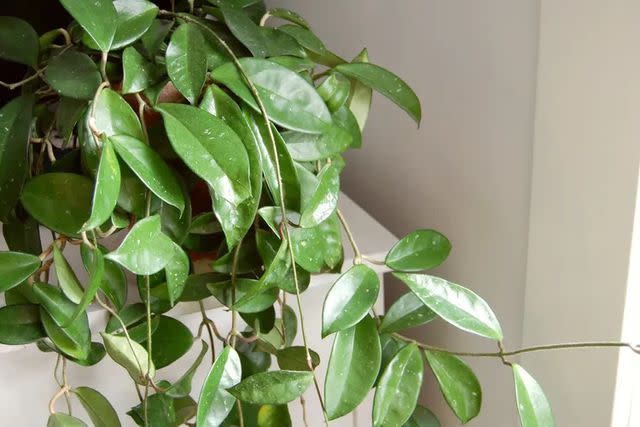
The Spruce / Cori Sears
Clusters of flowers with a look of porcelain are a hallmark of the wax plant (Hoya carnosa). This tropical is not a lover of bright sun, however, flowering will require six hours of filtered light during the growing season. Even without blooms, the wax plant features glossy evergreen foliage that can be trained as a vine to trail from a stand or hanging basket. Add orchid mix to potting soil and allow it to dry out completely between waterings. Give wax plant plenty of warmth and humidity, add a grow light during summer months, and never deadhead spent blooms.
Rex Begonia
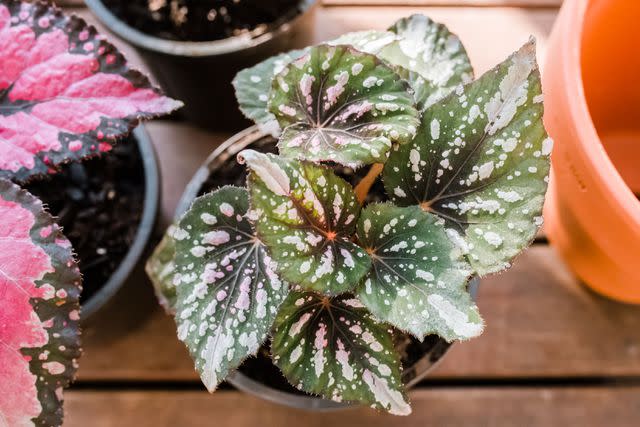
The Spruce / Kara Riley
Rex Begonias (Begonia rex-cultorum) adds appeal to the indoor garden with foliage in brilliant shades of red, white, silver, and purple. Leaves are lightly toothed and slightly crinkled giving rise to the name 'Fancy Leaf begonia'. Temperature, not light, is where this begonia gets picky. It thrives under fluorescent lighting but must have a warm location and plenty of humidity for foliage to put on its best show. Rex begonia is toxic to pets to eat.
Maidenhair Fern
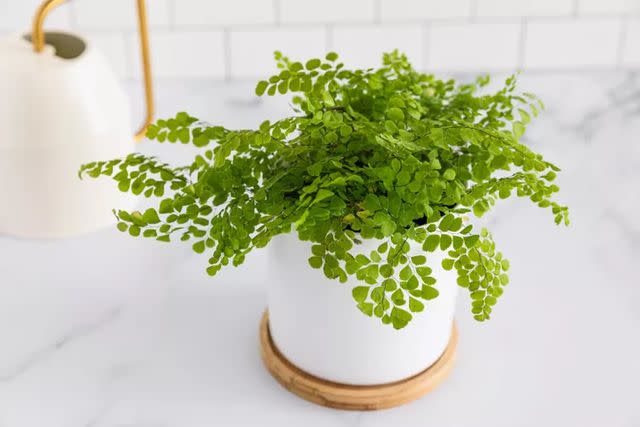
The Spruce / Anastasiia Tretiak
Small, fan-shaped leaves atop thin, black stems define the delicate maidenhair fern (Adiantum raddianum). The foliage forms in circular patterns adding to its unique appearance. Maidenhair ferns grow best in shade to small amounts of indirect light with lots of moisture and well-draining soil. Feed your plant by working compost or organic matter into the soil.
Rabbit's Foot Fern
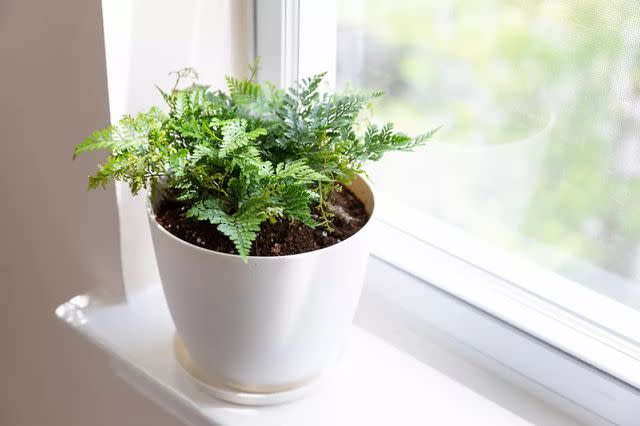
The Spruce / Anastasia Tretiak
Named for the furry rhizomes that send up delicate fronds, rabbit's foot fern (Davallia spp.), is a delightful houseplant that grows well in dappled and artificial light. Exposure to sunlight burns the delicate fronds.
Add peat to your potting soil and keep it evenly moist. Rhizomes often appear above soil and should be misted regularly to prevent drying out. Provide warm temperatures and plant in shallow pots to display the hairy "feet."
Golden Pothos
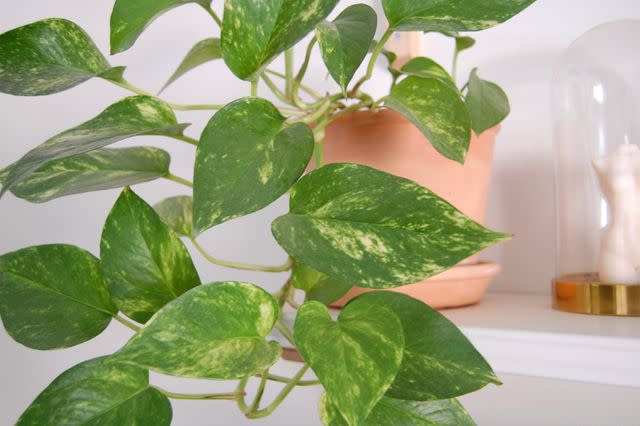
The Spruce / Cori Sears
A decorative, trailing houseplant, golden pothos (Epipremnum aureum) is so easy it almost takes care of itself. It looks good even under just fluorescent lighting although a grow light helps maintain variegation. This tropical vine features heart-shaped pointed leaves, drapes elegantly on a plant stand, and can be trained to climb.
Plant pothos in average soil in a pot with good drainage. This plant lets you know it needs water when leaves start to droop. Golden pothos is toxic to people and pets when eaten.
Peacock Plant
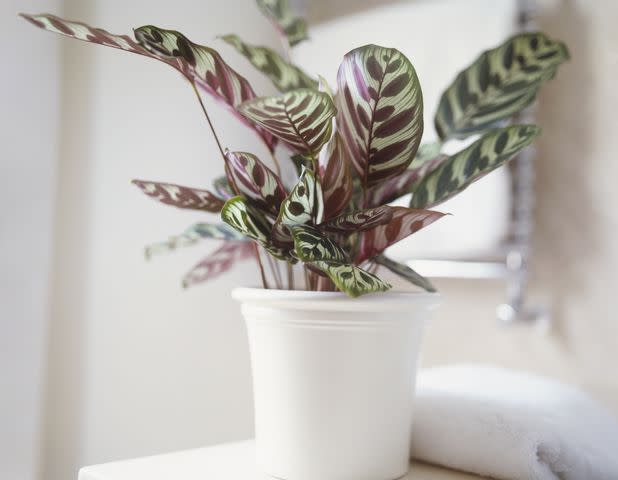
Leaf patterns and colors of the peacock plant (Geoppertia makoyana) give rise to its common name. Though not fussy about soil, it is particular about light exposure and watering, so a moisture meter could be helpful. Peacock plant thrives in full shade, but it will grow more slowly. Exposure to direct sunlight fades the distinguishing feather pattern on the leaves.
Sago Palm
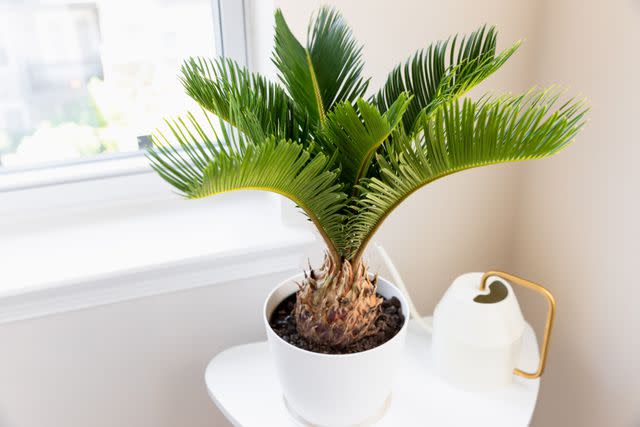
The Spruce / Anastasia Tretiak
Sago palm (Cycas revoluta) is distinguished by a single, rounded trunk and feathery fronds. It performs best with dappled light and burns easily if exposed to direct sunlight. Choose a pot with good drainage, and mix some sand and peat moss into your potting soil. Somewhat drought tolerant, water when soil surface dries out. Sago palm is toxic to humans and pets.
Peace Lily
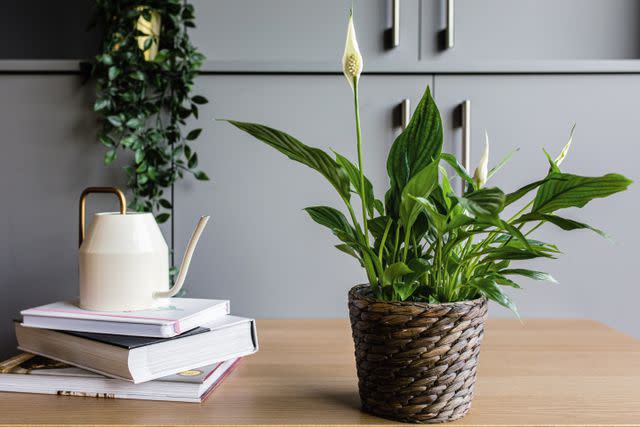
The Spruce / Cara Cormack
Peace lily plants (Spathiphyllum spp.) are a common houseplant that are most easily found in garden centers around Christmas and Easter holidays. Dark green, deeply veined leaves and large, fragrant white flowers are its distinguishing features. Mostly grown indoors, peace lilies thrive in shady and filtered light conditions. They do best when kept on the drier side. Give it distilled water when the top 2 inches of soil get dry.
Peace lily is toxic to humans and pets when eaten.
Parlor Palm
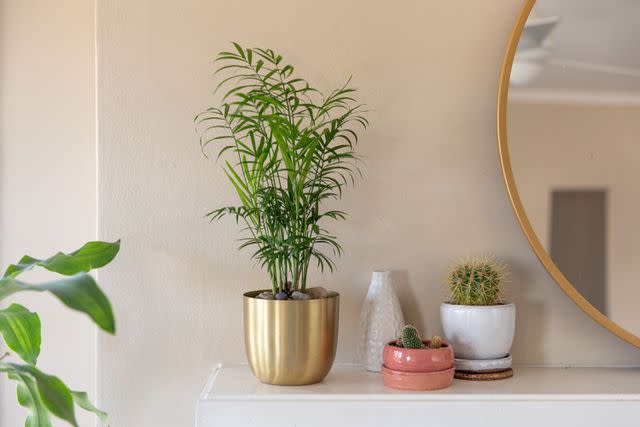
The Spruce / Krystal Slagle
Parlor palm (Chamaedorea elegans) is a good choice for the beginner's houseplant collection. Characterized by multiple thin trunks with lush tropical fronds, it grows from 3 to 6 feet tall, adding elegant structure to your indoor garden. Parlor palm adapts to soil type and lighting from filtered to fluorescent. Direct sunlight will burn the delicate foliage. Parlor palm is sensitive to overwatering, so keep soil evenly moist or on the slightly drier side.
Arrowhead Vine
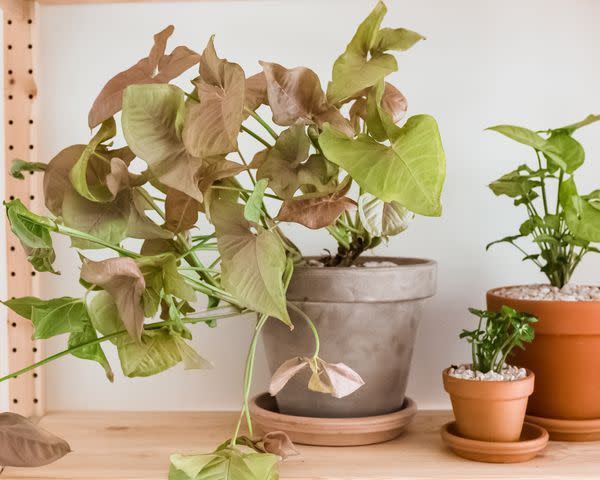
The Spruce / Kara Riley
Arrowhead vine (Syngonium podophyllum) is an attractive trailing or climbing plant featuring foliage in shades of green with lighter veins. Leaves are deeply notched at the base and taper to a point, with new varieties available in alternative color combinations including white and pink. Arrowhead vine likes dappled light to part shade, though the leaves burn in harsh sunlight. Give arrowhead vine plenty of warm, moist air and a moss pole or support to grow on. This plant is toxic to people and pets when eaten.
Lady Palm
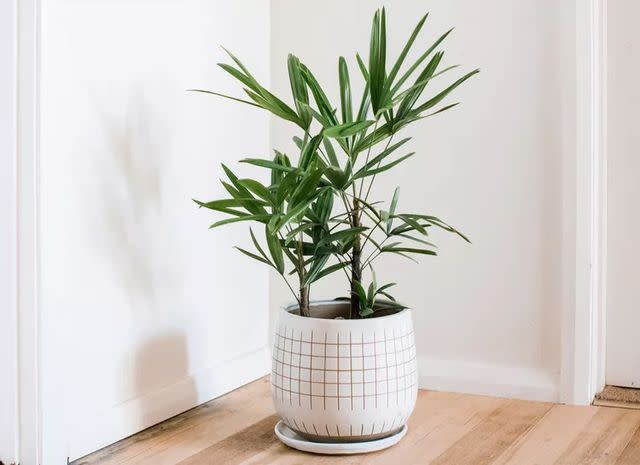
The Spruce / Kara Riley
Lady palm's aversion to direct sunlight makes this a popular palm for the indoor environment. Clumps of upright stems are topped with lance-shaped glossy green fronds that resemble fans. Known as a low-maintenance plant, lady palm (Rhapis excelsa) has average water needs and adapts well to indoor temperatures. Provide a pebble tray to raise humidity and choose a pot and potting mix that drain well.
Moth Orchid
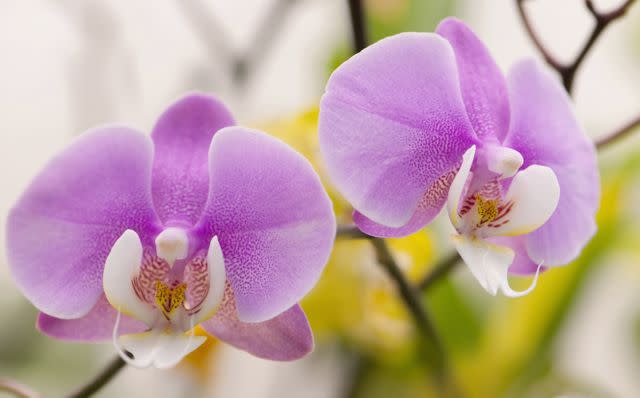
Availability and affordability of the popular moth orchid (Phalaenopsis spp.) means you don't have to be an expert to grow this gorgeous flowering plant. Orchids have a fussy reputation but once you establish a good schedule for this species, you'll enjoy big beautiful blooms for months at a time. Large, waxy leaves burn easily so keep your orchid out of direct sunlight. A spot near the floor that receives indirect light is ideal.
Use an orchid potting mix, water weekly, and fertilize during the growing season. Provide plenty of humidity but avoid wetting the leaves.
Read the original article on The Spruce.

